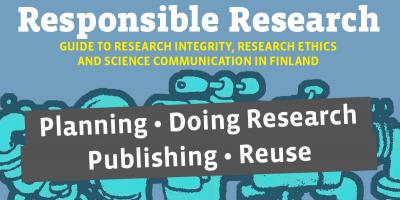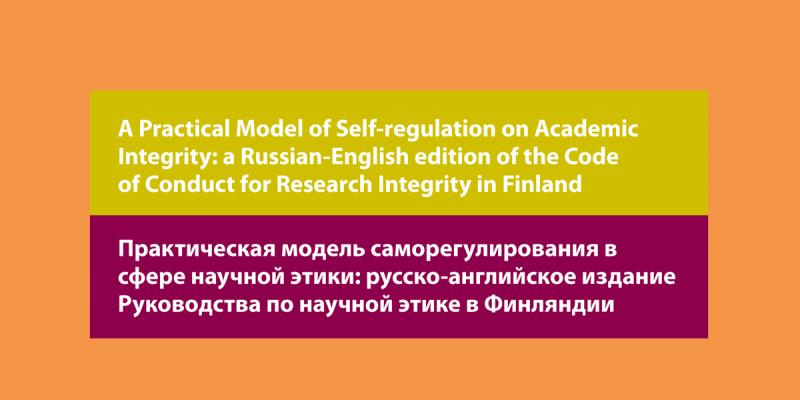Findings and technology can be used for good and harmful purposes. There is a need to be aware of the risks as early as the research planning stage.
The benefits of research in the natural sciences for humankind are undisputed. However, research conducted with good aims in mind may also produce findings or technology that can be used for wrong and harmful purposes.
The possibility of research findings being misused is not a new issue. In the first half of the twentieth century, scientists considered whether they should not publish research and findings in physics that would ultimately lead to the nuclear bomb. In recent decades, concern has especially arisen regarding the dual use possibilities of bioscience. A dual use product means all such products that can be used with both good and bad intentions. These kinds of products include, for example, many chemicals, nuclear materials and dangerous microbes, as well as knowledge and expertise regarding these.
A dual use product means all such products that can be used with both good and bad intentions.
There are several definitions of dual use research but usually it means research that produces new findings or technology that can be used for good and harmful purposes. The United States’ National Science Advisory Board for Biosecurity has defined “dual use research of concern” as meaning “research that, based on current understanding, can be reasonably anticipated to provide knowledge, information, products, or technologies that could be directly misapplied” and thus pose a threat, for example, to human health and safety, plants, animals and the environment.
Examples of dual use research includes reawakening in the lab the Spanish flu virus that killed more than 50 million people in the early twentieth century, or chemical synthesis of the polio virus. Sometimes, surprising research findings occur unpredictably. In the early 21st century, an Australian research group were trying to develop a mouse contraceptive vaccine using the mousepox virus. Surprisingly, the virus’ ability to cause the disease increased and the virus also killed the majority of the mice that had been vaccinated against it. Because the mousepox virus is closely related to the smallpox virus, the case created discussion on the openness of science and whether it is ethically right to publish research findings that could be misused.
Be aware of the risks as early as the planning stage
New methods and technology becoming cheaper brings biotechnology within the reach of more people than before. At the same time, however, the risk of harmful use increases. The dual use risks of research findings must thus be known as early as in the research planning stage. Today, some international research funding encompasses a risk assessment process which judges the safety of the research, whether it is ethical, and its dual use risk, among other things. Several international actors have drawn up good practice guidelines on dual use research.
The rapid development of the biotechnology sector makes it difficult to intervene in the risks associated with dual use research via legislation. However, the Biological Weapons Convention, also signed by Finland, bans all such research that is not conducted for prophylactic, protective and other peaceful purposes. Dual use research is also regulated by export controls. A Dutch researcher had to apply for an export permit from authorities in order to publish the findings of tests on the contagion of the bird flu virus, classified as dual use research, in an international scientific journal.
In preventing the harmful effects of dual use research, the researcher’s awareness of the risks associated with dual use, the peer review mechanisms of the research community, the responsibility of the research institution, and open dialogue between scientists and authorities are vital. A culture of responsibility must derive from the researchers and the scientific community itself. Researchers have a responsibility to be aware of the possibility that their work may be misused and to act so as to minimise opportunities for it to be misused as much as possible.
Susanna Sissonen, Senior Specialist, Biosafety Officer, National Institute for Health and Welfare, Finland
Further information:
Responsible life science research for global health security. WHO, 2010. http://www.who.int/csr/resources/publications/HSE_GAR_BDP_2010_2/en/
National Science Advisory Board for Biosecurity. http://osp.od.nih.gov/office-biotechnology-activities/biosecurity/nsabb
Biologisten uhkien osaamiskeskus (Centre for Biological Threat Preparedness). https://www.thl.fi/fi/web/infektiotaudit/laboratoriotoiminta/biologisten-uhkien-osaamiskeskus
You might also be interested in
Tämä teos on lisensoitu Creative Commons Nimeä 4.0 Kansainvälinen -lisenssillä. Detta verk är licensierat under en Creative Commons Erkännande 4.0 Licens. This work is licensed under a Creative Commons Attribution 4.0 International license.


